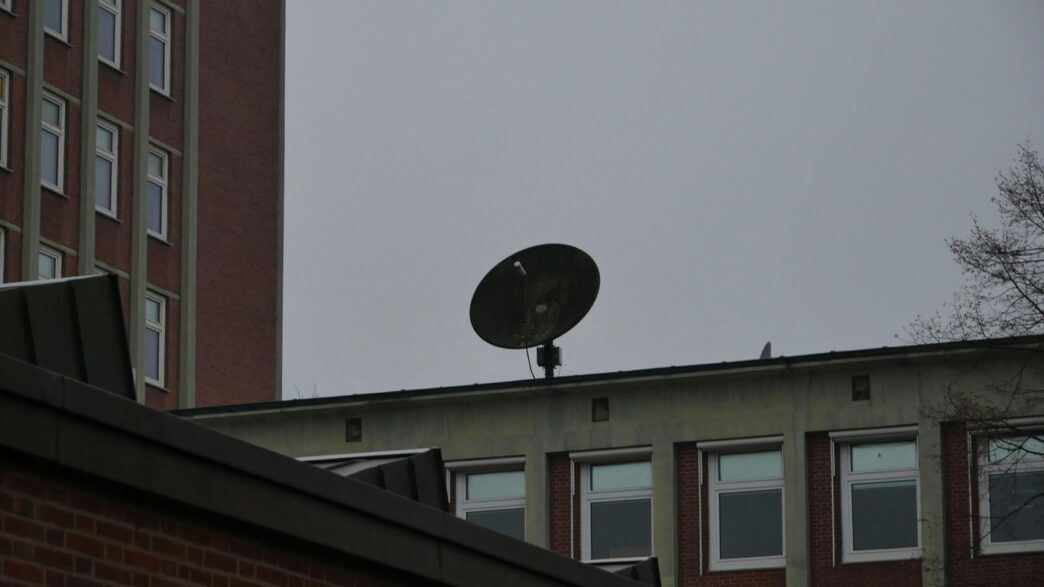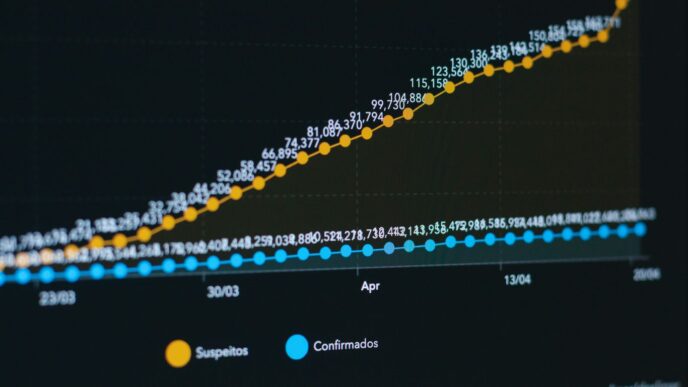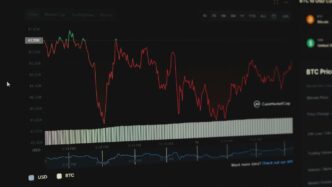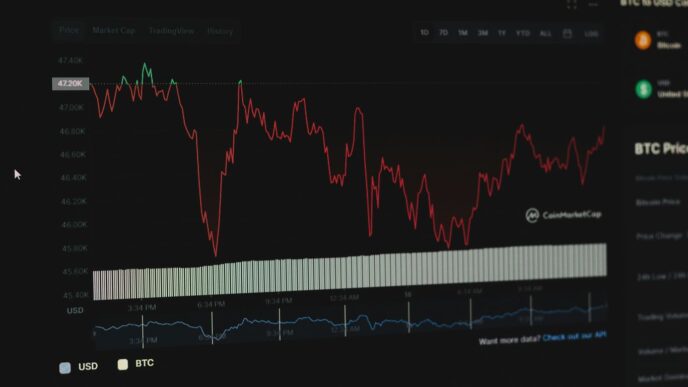Trying to figure out what you’ll actually pay for Starlink each month in 2025? You’re not alone. The advertised price is just the tip of the iceberg—there’s hardware, installation, taxes, and even the electricity to think about. I’ve seen folks surprised by their first bill because the costs aren’t always obvious up front. In this article, I’ll lay out the real Starlink monthly cost and break down every piece so you know exactly what to expect, whether you’re thinking about switching or just curious how it stacks up.
Key Takeaways
- Starlink monthly cost is more than just the plan price—hardware, installation, and taxes can add up.
- Service plans vary: Residential (Standard), Residential Lite, Roam, and Business, each with different monthly fees and features.
- Your first year will cost more due to the upfront hardware kit and possibly installation or accessories.
- Hidden costs like shipping, regional taxes, and power usage can bump up your total monthly spend.
- You can lower your Starlink bill by picking the right plan, watching for discounts, and pausing service when you don’t need it.
Breaking Down the Starlink Monthly Cost Structure
When you sign up for Starlink, the cost is more than just a flat monthly fee. There’s a handful of moving parts that end up on your monthly (and first-year) bill. Here’s what anyone thinking about Starlink in 2025 should know before clicking that order button.
Understanding the Recurring Monthly Subscription Fees
Starlink’s monthly price doesn’t always match what’s advertised in bold on their homepage. Why? Because what you pay each month depends on several factors, including your plan, location, and whether you qualify for any promotions. Here are the typical monthly plan fees for 2025:
| Plan Type | Typical Monthly Cost (USD) | Data Priority | Intended Use |
|---|---|---|---|
| Residential | $120 | Standard | Home, fixed address |
| Residential Lite | $80 | Lower | Congested regions |
| Roam | $165 | Standard | Travel, RV, mobile |
| Business | $250+ | High | Office, enterprise |
Remember, you might see different prices based on your region, data needs, and if you’re onboarding during a promo.
Key Differences Between Starlink Residential and Roam Plans
Picking between Residential and Roam is a bigger deal than it first appears. Here’s how they compare:
- Residential is for one fixed address. It gives stable service at your registered home or business and can’t easily be relocated.
- Roam plans let you travel. They’re made for people who hit the road in RVs, boats, or regularly change locations.
- Data priority isn’t equal. Roam plans don’t always get the same network priority as Residential users, especially during peak hours or in crowded zones.
If you move a lot, Roam is the only real choice. But for a house or cabin that doesn’t go anywhere, Residential usually costs less and has more consistent performance.
How Regional Pricing and Promotions Impact Your Bill
Starlink’s monthly costs shift around quite a bit depending on where you live and when you sign up. What does this mean in practical terms?
- In busier areas, you might see higher fees (or be offered a cheaper Lite plan with lower priority).
- Some rural regions get special promos—think hardware for $0 with a service contract, or 2-3 months at a reduced rate.
- Always check your specific address on Starlink’s website to see up-to-the-minute pricing, tax estimates, and any shipping fees that apply.
Bottom line: What your neighbor pays across state lines might be $20–40 different from your own bill, so don’t rely on general numbers online. Look up your address, read the fine print, and factor in any temporary deals.
In the end, Starlink’s price structure isn’t one-size-fits-all. It depends on your plan, where you live, and whether you hit the sign-up sweet spot for a good deal.
Starlink Plans and Their Monthly Pricing Explained
Let’s break down what Starlink is charging for internet service in 2025. There’s more variety here than you might expect—especially with promotions and new plans popping up. Picking the right plan can save you a lot of money, especially if your needs are pretty average.
Residential (Standard) vs. Residential Lite: What’s Included?
Starlink’s main home-based plans are made for houses, cabins, or any fixed address. These are the basics:
| Plan | Monthly Price | Data | Priority | Where It Works |
|---|---|---|---|---|
| Residential (Standard) | $120 | Unlimited | Standard | Single location |
| Residential Lite | $80 | Unlimited | Lower than Standard | Congested areas |
- Residential (Standard): Most people pick this—the regular monthly price is $120, which gets you all-you-can-use data. There’s no hard data cap, and speed is enough for most households, from streaming to gaming.
- Residential Lite: Priced at $80/month, this is only available in crowded spots where the main network is strained. You still get unlimited data, but your speed may drop a bit during peak times.
- In select markets, you might see promo pricing—for instance, folks can grab the Residential plan for $85 a month for the first year, less than the usual rate, thanks to a discounted Residential plan.
Roam Plans for Travel and Mobile Use
If you’re on the move or living in an RV, boat, or van, Starlink’s Roam plans are built for you. These aren’t tied to an address, so you can take internet basically anywhere you can point the dish.
- Roam Standard covers use within your continent, usually with a data bucket for "priority data"—after you hit that, you still have internet, but at lower speeds or with slightly less priority.
- Global Roam opens up the dish for international travel. Costs go up quite a bit here, with tiers depending on your required data (think $150–$450+ per month, depending on how much you plan to use).
- You can pause Roam in months you don’t need service—handy if you’re only traveling for part of the year.
Business and Priority Data Plans
Businesses (or power users) get a different menu. The main pitch: you pay more for guaranteed faster speeds and top-of-the-list bandwidth. These plans are also the only way to officially run Starlink at multiple sites or very high-demand locations.
| Business Priority Tier | Price Range | Data Limit | Extra Data Cost |
|---|---|---|---|
| Local Priority | $250–$1,500/mo | 50GB–2TB | $25–$125 |
| Global Priority | $400–$2,150/mo | 50GB–2TB | $100–$500 |
- Business plans use a special dish and have hard data caps for “priority data”—that’s data that’ll always be at the fastest speed possible. Go past your allowance and you’ll pay for more, or just slow down.
- Extra service features include support for mission-critical uptime, remote business operations, and higher upload speeds.
So, in short? There’s a plan (and a price tag) for almost every need—single homes, travelers, boats, and businesses. The best pick really depends on where and how you want to use your internet.
What Hardware and Setup Add to Your Starlink Monthly Cost
When people talk about Starlink pricing, everyone focuses on the monthly bill, but there are some real hardware and setup expenses you should factor in. These costs won’t hit your account every month, but if you stretch them out over time, they definitely affect what you end up paying each month.
Initial Hardware Kit Expenses and Promotions
Before Starlink will send you any internet, you have to buy a hardware kit. The kit comes with the dish (they call it the terminal), a Wi-Fi router, mounting base, cables, and a power supply. The standard hardware kit typically sells for $349, but some users have seen this price go up to $2,500 for performance or specialized packages. Sometimes Starlink runs limited promos where you can score a cheaper kit if you agree to a contract, and from time to time, a huge price drop pops up in select locations—so watching for discounts can help your budget (equipment fees that range from $349 to $2,500).
| Kit Type | Typical Price (USD) | Notes |
|---|---|---|
| Standard (most homes) | $349 | Sometimes discounted |
| Mini Kit | ~$599 (varies) | Compact for travel; limited |
| Performance/HP Kit | Up to $2,500 | For business, specialty use |
Don’t forget that taxes and shipping fees get added to these prices at checkout.
Professional vs. DIY Installation: What to Expect
Most people just do the setup themselves—it’s honestly designed for DIY. You unpack the kit, plug it in, use the app to find a clear sky spot, and stick the dish on the ground. But some folks pay for professional installation, usually because they want the dish up on a roof or in another tricky spot.
- DIY install: $0 if you handle it yourself (the Starlink app walks you through every step).
- Pro installation: Ranges from $100 to well over $1,350, depending on how hard your roof is to work with and how much custom gear is needed.
- Waiting for install: Sometimes this means sitting on a waitlist, and you’re still paying for the hardware upfront.
If you’re thinking about saving money, many recommend trying self-install first—just read up and make sure you’re comfortable on a ladder if it comes to that.
Essential vs. Optional Accessories and Upgrades
The kit gives you the basics, but extras cost more. Some accessories are totally optional, but others are almost necessary for tricky installations or larger homes.
Some add-ons you might consider:
- Mounting hardware: The included kickstand works for porches or flat ground. Roof mounts, wall mounts, or ridgeline mounts are extra and priced individually.
- Longer cables: The included cord is decent, but sometimes you need a longer run for your setup—those cables aren’t cheap.
- Ethernet adapter/mesh nodes: For stronger indoor Wi-Fi or direct network access, these are sold separately.
- Travel case: If you’re a Roam user or just like to take the dish with you, a padded case is a nice upgrade.
The takeaway is pretty clear: Your true Starlink cost isn’t just the bill you see once a month. Factoring in initial hardware investments, installation choices, and any must-have accessories gives you a more realistic sense of your budget, especially the first year.
Hidden and Variable Costs That Influence Your Starlink Bill
You’d think Starlink’s bill is just that one nice round number they show on the homepage, right? Not always. Some costs sneak onto your monthly or setup bill, and others just end up as tiny leaks in your budget if you’re not careful.
Taxes, Regulatory, and Shipping Fees
No matter what the website says, your monthly Starlink payment isn’t the final amount. Taxes and regulatory fees are tacked on based on your location. Shipping for your hardware is a one-time thing, but it pops up on your first bill and varies by state or country. Here’s a quick look:
| Cost Type | Frequency | Typical Cost (USD) |
|---|---|---|
| Sales Tax | Monthly/Initial | 5-10% of bill |
| Regulatory Fees | Monthly | $2 – $7 |
| Hardware Shipping | One-time (setup) | $25 – $75 |
These fees are non-negotiable, and sometimes they’re not shown until you’re ready to check out.
Power Consumption: Factoring Electricity Into Your Budget
Running your Starlink dish isn’t free. The dish draws power, and if you’ve got it running all day (most people do), your electricity bill will creep up. It’s not wild, but it might surprise you, especially off-grid folks or anyone on a tight budget. Some stuff to think about:
- Standard dishes use about 50-75 watts per hour.
- Running it 24/7 adds roughly $8 to $15 per month, depending on energy rates.
- Power use might spike if your dish is working overtime (say, lots of obstructions or extreme cold).
You can check average month-to-month expenses and plan for that small bump in your utility bills.
Mounting and Network Equipment Not Included
The basic kit just isn’t enough for everyone, especially if you want reliable signal or need to mount your dish somewhere odd. Expect to buy extra gear:
- Most roof or pole mounts are sold separately, ranging from $30 to $150 depending on type.
- Long or specialty cables, or Ethernet adapters, usually aren’t in the box—they’re extra.
- If you buy a performance kit, you’ll need a separate router, easily adding $100 or more.
A lot of customers only see these costs as they’re trying to get everything working right. Sometimes, the accessory spend climbs higher than you’d expect.
So, before you click ‘Buy’, double-check your total estimate. The fine print and extras can stack up fast and catch even careful folks off guard.
How to Reduce Your Overall Starlink Monthly Cost
Figuring out how to keep your Starlink bill as low as possible is something I’ve definitely spent a lot of time on. There are plenty of little tricks and plan options that, when you add it all up, can make a pretty big difference in what you hand over to Starlink each month. Here’s what actually works in 2025:
Choosing the Right Plan for Your Needs
This might sound obvious, but picking the right plan matters way more than people think. Here are some real ways you can adjust to save a few bucks each month:
- Take stock of how often you actually need high-speed or on-the-go internet. If most of your internet usage is at home and you don’t need top speeds all the time, the Residential Lite plan ($80/month, deprioritized data) could be all you need, instead of the full $120/month Standard Residential plan.
- For travelers, the Roam plan (prices vary by region, often around $150/month) lets you pause at any time. Only pay when you’re actually using it, which is a smart way to save if you travel seasonally.
- Business users: Don’t get sucked into overbuying on data. If you don’t hit the data cap on a Priority plan, see if you can drop down a tier.
| Plan | Typical Monthly Cost | Who It’s For | Pause Option? |
|---|---|---|---|
| Residential (Standard) | $120 | Homes needing constant fast speeds | No |
| Residential Lite | $80 | Lower usage, some speed sacrifice | No |
| Roam (Mobile) | $150+ | On-the-go use, RVs, travelers | Yes |
Taking Advantage of Discounts and Seasonal Offers
Saving isn’t just about your base plan. Here’s how you snag a better deal:
- Promotions pop up on hardware (sometimes free, sometimes half-price), especially during off-peak times or Starlink expansion phases.
- In a few states and countries, you might land a free hardware kit if you stick with a 12-month agreement. Check the site first to see if this applies in your area.
- If you’re in a region where Starlink is growing fast, look for launch or beta programs—they sometimes have introductory rates.
Pausing or Adjusting Your Service to Save Money
Pausing your service is a really handy feature, but mostly for Roam users. Here’s how to make it work for you:
- If you travel with Starlink or use Roam seasonally (say, just for summer road trips), don’t forget to pause your account when the dish sits in the garage. You won’t be charged during those months.
- Set calendar reminders for when you actually need service again—easy to forget, but it keeps you from missing the next trip.
- If you’re switching plans (maybe from Residential to Lite, or Roam to Standard), don’t be afraid to contact support and see if there’s a promo you missed—sometimes they sneak in loyalty credits or upgrades.
By thinking through your actual usage, being smart with the pause button, and checking for low-key promotions, you keep that Starlink monthly cost in check—no spreadsheets or fancy skills required.
Starlink Monthly Cost Compared to Other Internet Options

How much are you really paying for Starlink compared to other services out there? That’s a question lots of folks have, especially those living where regular cable or fiber just isn’t going to happen.
Is Starlink More Affordable Than Traditional Internet?
For a lot of people in rural or remote areas, Starlink is often the only way to get decently fast internet—but the price tag might make you pause if you’re used to city-bundled cable. The basic Starlink Residential plan will generally run you $120 a month, which can look steep next to some budget cable options in big cities. But most rural DSL plans cap out far slower, and often aren’t that much cheaper.
Here’s a quick comparison of common plans (prices as of October 2025):
| Provider | Typical Monthly Price | Download Speed | Data Cap |
|---|---|---|---|
| Starlink | $120 | 50-200 Mbps | Unlimited |
| Viasat | $99–$130 | up to 150 Mbps | Soft cap 850GB |
| Hughesnet | $99 | up to 50 Mbps | 100–200GB (soft) |
| Cable (urban) | $70–$100 | 200+ Mbps | Usually Unlimited |
| Fiber (urban) | $80–$120 | 300+ Mbps | Unlimited |
Some key points:
- Starlink’s speed and unlimited data can justify the price, especially if you’re used to slow rural DSL.
- Satellite competitors like Hughesnet or Viasat do exist, but they have lower data allowances and higher latency.
- In cities, cable or fiber is still cheaper for more speed, if you can get it.
When Starlink Is the Best Value for Rural Users
If you live way outside of town, your options are probably pretty slim. Here’s when Starlink offers unbeatable value:
- No cable or fiber lines in your area
- Work-from-home or streaming is impossible on DSL
- You’ve hit your wireless or satellite provider’s data caps—again
- You need internet for security cameras, smart home gadgets, modern life
For rural, off-grid folks, Starlink’s reliability is worth the cost.
Long-Term Cost Considerations and Savings
It’s more than just the monthly bill. Here’s what else to factor in when weighing long-term costs:
- Hardware cost upfront (like the $349 for the dish)
- Power used by the Starlink device all day
- Any extras (mounts, cables, network upgrades)
But there are some indirect savings:
- More work-from-home days (no commute)
- Fewer missed business opportunities
- Access to online services, telehealth, even streaming entertainment—it counts
In short, Starlink isn’t cheap, but for many people it fills a gap at a fair price point, especially when you factor in the alternatives—or lack of them—outside major cities.
Tracking Changes in Starlink Monthly Cost for 2025
Starlink has become a go-to internet choice for all kinds of folks. If you’re keeping an eye on your monthly bill, you’ll want to know that things can shift a lot from year to year. Let’s break down how Starlink pricing changes in 2025, what affects those prices, and how to keep tabs on your cost so there aren’t any surprises.
Price Fluctuations: Increases, Decreases, and Promos
Over the years, Starlink pricing hasn’t stood still. Sometimes the cost jumps up, then there are periods where you see discounts or special offers. For 2025, some users saw price hikes in certain regions, while others noticed short-term deals—especially for people signing up for the first time or switching plans.
Here’s what you can expect with price changes:
- Service plan fees may increase in high-demand areas, or drop if network congestion eases
- Promotions tend to pop up during holidays, summer and at the end of quarters
- Hardware kit discounts are occasionally offered for new subscribers
Here’s a simple table showing how monthly fees might have shifted from last year to this year on common plans:
| Plan Type | Average 2024 Price | Average 2025 Price | Notes |
|---|---|---|---|
| Residential | $110 | $120 | Moderate increase |
| Residential Lite | $70 | $80 | Expanded to more regions |
| Roam | $150 | $165 | Includes some new features |
So, if you’re looking to start service or upgrade, keep those promos and rate changes in mind—you could pay less (or more) depending on timing and location.
How to Stay Informed About Current Pricing
When Starlink prices move, Starlink typically gives a heads-up, but not everyone gets the news at the same time. If you want to stay ahead:
- Always check starlink.com for the latest regional prices
- Sign up for Starlink’s email alerts
- Scan forums and community pages (like Reddit or Facebook groups)
- Watch your account dashboard—any pending fee changes are usually posted there first
- Set up a calendar reminder to check at least every quarter
There’s no perfect system for tracking price changes, but a quick monthly glance can keep you from being caught off-guard.
Understanding Data Caps and Potential Extra Charges
Not all Starlink plans are made equal when it comes to data usage. While the Residential (Standard) plan in 2025 still includes unlimited data, other plans—like Roam or Business/Priority tiers—often have monthly priority data limits. Here’s how it shakes out:
- If you go over your priority data allotment, your speeds can drop or you may have to pay for extra data
- Standard plans stay unlimited, but business and mobile plans may hit you with a "soft cap" or speed reduction
- Top-up data is available for business users, but it’ll cost extra per GB
List of potential extra costs in 2025:
- Extra high-priority data for business users ($2 – $10 per additional GB)
- International roaming surcharges
- New taxes or regulatory fees, especially as local laws change
To avoid surprise charges, always double-check your plan’s fine print before you start streaming or gaming like crazy.
So, keep these tips in your back pocket. It’s easy for Starlink bills to inch up, but if you know what to watch for, you’ll always know exactly what you’re paying each month.
Conclusion: What Starlink Really Costs Each Month in 2025
So, after breaking down all the numbers, it’s clear that Starlink’s monthly price tag is just one part of the story. Sure, you might see $120 a month for the standard plan (or less if you catch a promo), but there’s more to it—like the upfront hardware cost, possible installation fees, and the little extras like mounts or travel cases. Don’t forget about taxes and the small bump in your power bill, too. For some folks, especially in rural or off-grid spots, these costs can feel totally worth it for fast, steady internet. For others, especially if you’ve got decent cable or fiber options, it might seem a bit steep. The good news? Starlink doesn’t lock you into contracts, and you can sometimes pause your service if you’re not using it. At the end of the day, what you really pay each month depends on your plan, your setup, and how much gear you need. Just make sure to check the latest prices for your address, and weigh all the pieces before you hit that order button.
Frequently Asked Questions
How much do I pay for Starlink each month in 2025?
The monthly cost for Starlink depends on the plan you pick. In 2025, the Residential (Standard) plan is usually around $120 per month, while the Residential Lite plan can be as low as $49 to $80 per month in some areas. Roam and Business plans cost more. Always check the Starlink website for the latest prices in your area, since they change based on location and promotions.
What extra costs should I expect besides the monthly fee?
Besides your monthly payment, you need to pay for the hardware kit, which is usually between $299 and $349 unless there’s a special deal. You might also pay for installation if you don’t set it up yourself, which can cost from $100 to over $1,000. Other costs can include shipping, taxes, and any extra accessories like mounts or cables.
Are there any hidden fees with Starlink?
There are a few costs that aren’t always obvious. These include taxes, shipping fees for your hardware, and sometimes regulatory charges. If you use more power to keep your dish running all day, your electricity bill might go up a little too. If you want to mount the dish somewhere special, you may need to buy extra equipment.
Can I pause or stop my Starlink service if I don’t need it for a while?
Yes, some Starlink plans, like Roam and certain Business plans, let you pause your service. This means you won’t pay the monthly fee while it’s paused. However, the regular Residential plan usually can’t be paused because it’s tied to your home address.
Is Starlink cheaper than regular internet?
It depends on where you live. In cities with cable or fiber, Starlink can be more expensive. But in rural or remote areas where other internet is slow or unreliable, Starlink is often a better deal because you get faster and more stable service.
Will the price of Starlink go up or down in the future?
Starlink’s prices sometimes change. They may go up or down, and there are often promotions or discounts in some regions. The best way to know is to check the Starlink website often and look out for emails or updates from them.














